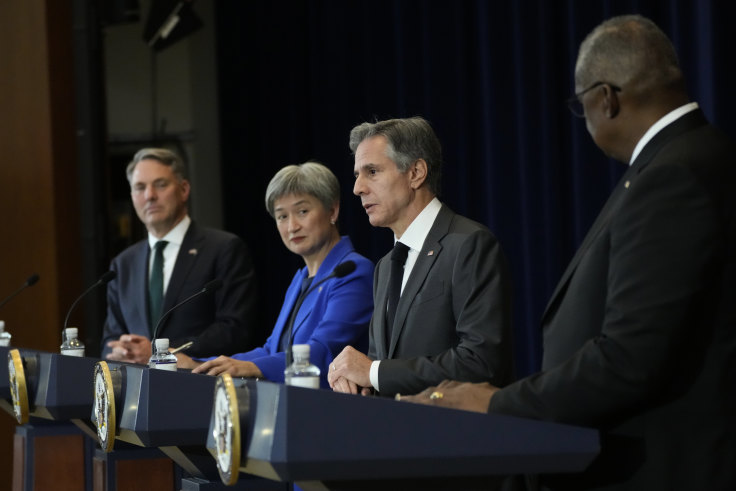Why Is It Preferable for Israel That Iran Enrich Uranium at 90%?
Israel is presently absorbed by its struggle over judicial reform; meanwhile, without regard to what is happening in Israel, Iran is moving forward in the expansion of its nuclear program.
In addition, the Biden administration is continuing to advance “unofficial agreements” with Tehran, including a deal based on freezing the current status of uranium enrichment at 60% in exchange for the release of billions of dollars. The goal is to take the nuclear issue off the table, allowing for some quiet before the 2024 election. The appropriate way to view these agreements, which are, in many ways, worse than the Joint Comprehensive Plan of Action [the Iran nuclear agreement] is as an error of "buying silence.”
The idea behind the agreements is to freeze enrichment at no more than 60%, very close to the 93% level necessary for weapons. The agreements give Iran de facto permission to enrich to 60% for the first time — this, without increasing the accumulated quantity of uranium — in tandem with the easing of sanctions; i.e., a WIN-WIN situation. Presenting the achievement as “agreements” and not as an agreement allows the administration to avoid going to Congress for approval, where it would be expected to receive strong opposition.
In light of this, the best scenario for Israel is an Iranian decision to move to enrich at 90%, which would halt the flow of billions of dollars to Iran. The illusion must be dispelled that freezing at 60% enrichment is meaningful.
There is no real technological difference between 60% and 93%. In the end, the difference amounts to only a few days or weeks. This dangerous problem was created when the administration did not react to the massive enrichment at 20%, which represented almost 70% of the time needed to accumulate fissile material for a bomb.
Over the almost 10 months since the United States assassinated Qassem Soleimani, Tehran stopped advancing its nuclear program, but after the election of Joe Biden and the halting of the “maximum pressure” doctrine of Donald Trump, Iran took off the brakes. When Tehran feels that the United States is strong, they retreat, and when they feel the United States is “soft,” they push forward.
It is still not clear where the United States is drawing its red line, which, if crossed, would lead to action that would prevent Iran from developing nuclear weapons. Since Biden's election, under the pledge to withdraw from the “maximum pressure” campaign, Tehran has greatly increased its nuclear program. It was increased to 20%, 60% and even to 84% by using advanced centrifuges. Tehran produced metallic uranium needed to develop a weapons system and did not cooperate with IAEA inspectors or with the demand to provide answers to the agency’s open investigation files.
After three years and the failure of the “maximum compromises” plan, perhaps the Biden administration understands that it must clearly convey the message to Iran that it will act forcefully if Iran crosses the 90% enrichment threshold. Acting with force does not mean application of the U.N. snapback sanctions that were to follow an enrichment of 20%. The action must include a credible military threat and the use of U.S. force.
Even if Iran does not believe the United States would use military force, it would be unlikely to make the mistake of enriching beyond 90%. Instead, Tehran would take another route, similar to that taken in previous decades, that allowed the West to contain the widening of its nuclear program.
Iran will remain at 60% and will continue to build its capabilities, including the development and manufacture of advanced centrifuges; the development and manufacture of ballistic missiles capable of carrying nuclear warheads; the development of capabilities linked to weapons systems — the absence of which, in fact, have kept Iran from [making] a bomb. Most importantly, it will continue to build and develop two underground sites in Natanz: the first, where advanced centrifuges are stored; and the second, a site under advanced construction that — according to intelligence estimates — will be ready in another two or three years to be used for future enrichment at high levels. It is considered to be well-protected from attack.
The world, with eyes closed, is advancing toward an Iranian trap, because Iran understands that enriching uranium under 90% is best; therefore, it is not only deciding on this course, but is leveraging its "agreement” not to enrich to this percentage in order to receive benefits from the United States and to advance toward nuclear weapons on all fronts. Meanwhile, the Biden administration is sanctifying the facade of silence before the elections.
Concurrently, Iran is continuing its aggression toward American interests in the Persian Gulf; violating human rights; strongly supporting Russia in the war in Ukraine by transferring advanced weapons; and strengthening its ties with China, the main rival of the United States. Iran is also trying to drag Israel into a multifront conflict, while remaining on the sidelines.
Israel and the United States must fight against the Iranian strategy. Israel must improve its military capabilities and present Iran with a credible military threat; it must make clear to the United States its position regarding the developing agreements. Congress must immediately track and influence the wrong steps taken by the Biden administration.

